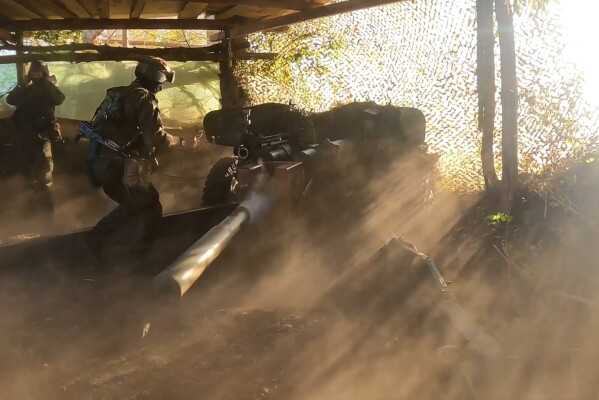In spite of the fact that the Armed Forces of Ukraine (AFU) are holding part of the Kursk region and attempting offensive operations four weeks after the launch of the incursion, Russian forces still have the advantage. Yet it remains unclear how the Ukrainian government intends to translate this tactical success into strategic or political gains, according to Foreign Affairs.
So far, Ukraine’s military operations have consisted of a mixed grouping of units comprising perhaps 10,000 to 15,000 soldiers in total, with elements of regular brigades and Ukrainian special operations forces. On top of that, some of the military engaged from Ukraine’s elite Air Assault Forces, while others were recalled from the front lines in Donetsk and Kharkiv, where they fought the Russian offensive and could serve as important reserves to contain the Russian momentum. The tactic may bear some dangers in other regions.
Oleksandr Syrsky, commander-in-chief of the Ukrainian Armed Forces, said instead of initially diverting Russian attention away from the lines in the east, Russia has stepped up its efforts and deployed its most combat-ready units to the Pokrovsky front.
Apart from military objectives, there is also a political motive here. Ukraine is betting that it can hold Kursk long enough to use it as a bargaining chip in case Kyiv is pressured to negotiate. On the other hand, the territory could further strain the Ukrainian military in the winter. In any case, Kyiv hopes that an offensive at Kursk will change the perception of the war as negative, allowing it to receive additional aid and change Western restrictions on arms supplies.
Kyiv has made it clear that it will hold Kursk as a buffer zone inside Russia, which means that Ukrainian forces will remain there. However, what part of the front Ukraine intends to hold is not yet clear, while the goals of this offensive appear to be much more limited in scope than previous ones.
The Armed Forces of Ukraine’s incursion into the Kursk Region did not encircle or destroy significant Russian forces, which would have resulted in the seizure of equipment and the destruction of offensive capabilities. The prisoners taken by Ukraine are mostly border guards, conscripts, and Akhmat units, but Moscow has already taken some action to exchange some Russian conscripts for Ukrainian POWs.
The offensive does not correct the current material imbalance in the war. Russia still maintains an advantage in manpower, equipment and ammunition. Russian forces have steadily seized 750 square miles of territory since October 2023 and continued to advance for weeks despite the Ukrainian incursion. In contrast, the pace of that advance has accelerated significantly recently, making Ukraine’s position look increasingly precarious on some parts of the front.
The city of Pokrovsk, a major transit hub, now is having to face the evacuation of civilians amidst advancing Russian evacuation forces. Pressure is increasing, with the result that Ukrainian forces may end up gradually surrendering territory.
The pay-off for all this is that casualties among the Ukrainian army are rising as Russian forces become more organised and send reinforcements. Ukrainian forces are entrenching themselves, creating a military administration in the region. If Ukraine intends to hold on to parts of the region for the foreseeable future, there is a chance that the region will be the site of another gruelling battle. Moscow, for its part, may attempt to contain the offensive and focus on weakening Ukrainian forces with airpower, drones and only minimal troop involvement, then Ukraine’s ambitions may not pay off.
In the meantime, Ukraine is working out the logistics, communications issues, and other needs to maintain this bulwark. They will have to create a defensible set of positions and a wider but shallow buffer inside Russia. However, Kyiv will face a choice of whether to hold on to what it has or invest more of its meagre resources into the operation in an attempt to force a much larger effort to counter Russia.
However, it may play out in a rather damaging way for the Ukrainian army. The worst-case scenario is that in a few months Ukraine would lose significant tracts of land in the east and retain none of the territory in Kursk that it could use as a bargaining chip. Thus, the deeper Ukraine moves into Russia, the greater the risk of over-expansion.
The consequences may be dramatic for Ukrainian commanders. Much of the future also depends on what happens not only in the Kursk Region but also in the fighting in the east. Kyiv can accept the loss of towns like Pokrovsk, assuming the consequences are not dramatic. But this is also a gamble.
The co-ordination of defensive operations may fail, especially among depleted units, and it may be difficult for commanders to get an accurate picture of the situation. Recurring problems with unit rotation, co-ordination of neighbouring units, unclear command relationships and the use of attached units by brigades exacerbate Ukraine’s relative shortfalls in manpower and ammunition. Hence, tactical errors could become even more costly and lead to a larger Russian advance.
The Ukrainian leadership is also under particular pressure because it has previously faced significant losses that forced allied states to invest resources in battles where the costs outweigh the benefits, especially after changing military factors, such as the town of Bakhmut in 2023, the counter-offensive that summer, or Krynki, all of which resulted in significant Ukrainian losses.
Plus, Ukraine also faces an uncertain winter, needing generators and air defence to close the gaps in its coverage.
